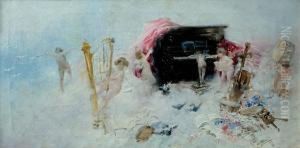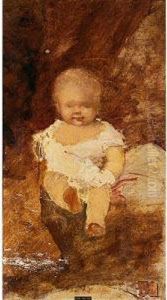Casto Plasencia Paintings
Casto Plasencia y Maestro was a prominent 19th-century Spanish painter, born in Madrid on June 8, 1846. His artistic talent manifested at an early age, and he was initially trained by his father, who was also a painter. Plasencia later attended the Royal Academy of Fine Arts of San Fernando in Madrid, where he honed his skills in drawing and painting, and studied under the tutelage of respected artists of the time.
His style was deeply influenced by the academicism of his era, which was characterized by a strong emphasis on technical skill, realistic representation, and often, historical or mythological subject matter. Plasencia's work, however, also reflected the changing tastes of the late 19th century, including the growing interest in realism and the naturalist movements that were gaining popularity across Europe.
Plasencia's career was marked by his success in national exhibitions and his participation in international expositions, where he earned recognition and awards. His paintings typically featured landscapes, genre scenes, and historical themes, executed with meticulous detail and a masterful use of color and light. He was particularly admired for his ability to capture the nuances of the Spanish countryside and the lives of its people.
Despite his successful career, Casto Plasencia's life was marked by personal tragedy and health issues. He suffered from mental illness, which impacted his ability to work and eventually led to his premature death. Plasencia passed away on May 21, 1890, in Madrid, at the young age of 43. His legacy is preserved in the collections of various museums and institutions across Spain, where his works continue to be appreciated for their technical excellence and their evocative portrayal of Spanish life and history.



